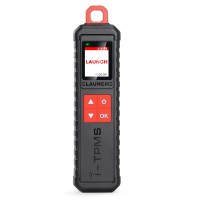LAUNCH X431 O2-2 Scopebox Tester Oscilloscope (4 Channels) Digital Electrical analyzer USB Port Fit for X431 PAD VII, PAD V, PAD III, Pro3 APEX

Check Here>>>
X431 2 Years Subscription Renewal Card Flash Sale, Only €380
Check Here>>>
For tech support And Best Price Pls Contact Erin:
- WhatsApp: +86 18054815707
- Email: Sales@x431shop.eu
Related Download Files
Product Description
- X431 Oscilloscope is designed to analyzes data for all kinds of the testing applications on the automotive parts (including circuits, sensors,actuators, ignition etc.). to resolve complex electrical faults.
- LAUNCH X-431 Oscilloscope works for x431 PRO ELITE, X431 PAD V,X431 PAD VII Elite,X431 IMMO Elite,X431 IMMO PLUS ,PAD II,X431 Throttle, Pro3 APEX, V 5.0, Pros V5.0, V+, Pro3s+, Pro5, Pro TT, Pro3 ACE, Pro Dyno, Pro3 APEX, X431 Pad II AE, X431 Torque, X431 Turbo,etc.
Featuring a new design and upgraded hardware, the LAUNCH O2-2 Scopebox is a versatile and easy to use add-on module that can detects high level faults on various electrical components, such as sensors, acturators and circuits. By integrating with the X-431 series scan tools via O2-2 application, it delivers accurate and conclusive diagnostic faults that enable the shop and technician to enlarge their scan tool's functionality.
O2-2 Scopebox Oscilloscope Advantages
- Channels 4
- Bandwidth 100 mhz
- Rasing time less than 3.5 ns (typical)
- LAUANCH Electrical analyzer (oscilloscope) is stable, durable and portable.
- LAUNCH O2-2 Scopebox can detects high level faults on various electrical components, such as sensors, acturators and circuits.
- By integrating with the X-431 series scan tools via O2-2 application, it delivers accurate and conclusive diagnostic faults
1. X431 PAD V Elite, X431 PAD VII Elite, Launch V 5.0, X431 V+, PAD III
2. DBScar VII Device
- X431 deice: X431 PRO ELITE,Pros V5.0 Pro3s+, Pro TT, Pro3 ACE, Pro Dyno, Pro3 APEX, X431 Pad II AE, X431 Torque, X431 Turbo,X431 Throttle, etc.
- IMMO Series: X431 IMMO Elite,X431 IMMO PLUS
- Creader Series: CRP919X BT, CRP919E BT
Launch O2-S2 Scopebox Main Functions
X431 O2-2 Scope box Oscilloscope Versatile and easy-to-use add-on module that can detect high-level faults in various electrical components, such as sensors, actuators and circuits. 2. By integrating with the X-431 series scan tools through the O2-2 application, it provides accurate and conclusive diagnostic faults that allow the shop and technician to extend the functionality of their scan tool. 3.Multiple automotive tests including circuits, sensors, actuators, ignition tests and more.
1.Features the ability to record and playback high-resolution waveform data for future analysis.
2.One key enable function allows users to capture a particular waveform which makes the process 70% more efficient as compared to other scopes.
3.Access to 23 variants of automatic measurements that are displayed on one screen for an easy switch.
4.Ability to input names and characters directly by clicking on the virtual keyboard, this operation streamlines the process and contributes to 90% efficiency.
5.Use the zoom in/out feature to review precise details.
6.Customizable personal system settings that can be saved as configuration files for viewing.
7.The self-calibration function allows optimization of the oscilloscope signal path for maximum measurement accuracy.
8.Magnifies waveform math operations, such as addition, subtraction, multiplication and FFT function for high level waveform analysis.
9.Multiple automotive tests include circuits, sensors, actuators, ignition tests and more.
10. X431 Oscilloscope is designed to analyzes data for all kinds of the testing applications on the automotive parts (including circuits, sensors,actuators, ignition etc.). to resolve complex electrical faults.
11. Library of predetermined waveform signals, built-in memory; Choose of the waveform display speed for fast analysis
12. Registration and storage of the tested signals for later analysis and troubleshooting
13. Auto adjusting of all chart signals on all 4’s channels
14. Separate grounding of each channel to minimize distortion of test signals
15. High quality BNC connectors
16. Complete set of adapters for ignition systems, sensors, connectors and other accessories
Launch O2-2 Scope Box vs Launch O2-1 Scope Box
| Model | O2-1 | O2-2 |
| Channel | 4 | 4 |
| Bandwith | 100MHz | 100MHz |
| Rise Time | ≤3.5ns(typical) | ≤3.5ns |
| Maximum sampling rate | 1Gbps(for four channels) | 1Gbps |
| Input resistance | 1MΩ±1.5% | 1MΩ±1.5% |
| Storage depth | 50M | 10M |
| Number of sampling bits | 8bit | 8bit |
| vertical accuracy | 3% | 3% |
| Vertical gear | 5mV~10V | 5mV~10V |
| Inverting | Support | Support |
| Channel coupled | DC, AC | DC, AC |
| Time base gear | 5ns~1ks | 1ns-1ks |
| Time base accuracy | 20ppm | 20ppm |
| Sampling mode | Normal | Normal |
| CANBus decoding | CAN, LIN | CAN, LIN |
| Trigger type | Edge, Pulse width | Edge, Pulse width |
| Trigger mode | Normal, Auto and Single SEQ | Normal, Auto and Single SEQ |
| Trigger coupling | DC, Noise rejection | DC, Noise rejection |
| Math | Double waveFFT | Double waveFFT |
| Display | YT、Zoom、Roll | YT、Zoom、Roll |
| Roll mode | 200ms/div~1000s/div | 200ms/div~1000s/div |
| Auto configuration | Support | Support |
| Auto measurement | 23 | 23 |
| Cursor | Horizontal cursor, Vertical cursor | Horizontal cursor, Vertical cursor |
| Powered by | USB port, DC IN port | USB port, DC IN port |
| Data transmission method | USB | USB |
| Vehicle configuration options | Circuits, sensor, actuators, ignition | Circuits, sensor, actuators, ignition |
| Operating temperature | 0℃~50℃ | 0℃~50℃ |
| Power supply range | USB:5V/1A DC:12V/24V |
USB:5V/1A DC:12V/24V |
| Compatibility | Different tablet resolutions require different APPs | One APP can be compatible with multiple tablet resolutions |
| Multi-touch gestures | No | Supports 2-point touch, the waveform can be zoomed in or out vertically or horizontally |
| Vehicle configuration | No | Each test project can support online help documentation (help documentation will be compiled according to needs later) |
| Firmware upgrade | Manual upgrade | Support online upgrade |
| Trigger | Waveform observation cannot be expanded during normal trigger waiting. | Can be used normally during normal trigger waiting. |
| Demo function | No | Yes |
| Split-screen | No | Yes |
| Sampling rate | Single channel 1G/s, more than 2 channels only 250M/s | Single channel 1G/s, 2 channels 500M/s, multiple channels 250M/s |
| Start time | 2-3S | about 16s |
| Power consumption | about 6W | about 7.5W |
| Channels |
4 |
| Bandwidth | 100MHz |
| Rising Time | 3.5ns (typical) |
| Accuracy | ±3% |
| Input Impedance | 1M ±1.5% |
| Input Type | Single-ended, BNC Connector |
| Input Coupling | DC, AC |
| Overload Protection | ±200V on single input |
| Timebase Ranges | 1ns~1ks (1 Channel) 1ns~1ks (2 Channels) 1ns~1ks (4 Channels) |
| Vertical Resolution | 8bits |
| Buffer Memory | 10M (for 4 Channels) |
| Power Interface | USB port, DC IN port |
| Data Exchange Via | USB |
| Trigger Mode | Normal, Auto and Single SEQ |
| Advanced Triggers | Edge, Pulse width |


How to Connect the Cables?
Different application scenarios require different connection methods (no matter which application scenario, the following connections are required):
First, power the oscilloscope box through the double-clip power cable: Connect one end of the double-clip power cable to the power interface of the oscilloscope box, and the other end to the vehicle battery to draw power (red is connected to the positive pole, black is connected to the negative pole).
Note: * PADVII series tablets support USB power supply.
2. Connect the Type B terminal of the USB cable to the Type B interface of the oscilloscope, and connect the other end to the USB interface of the diagnostic device.'
Package Included:
1pc x Launch O2-2 main unit
4pcs x HT 30 test lines
1pc x HT25 secondary ignition pick-up line
1pc x battery clip cable
1pc x USB cable
2pcs x HT201 attenuator
20pcs x piercing needles
2 pairs x multimeter probes
2 pairs x crocodile clips
5pcs x colored 4 female probes
4pcs x clipper fuses(5*20mm)
2pcs x screw head
1pc x user manual
1pc x color label
1pc x packing list




Ship from EU/UK/Other Overseas Warehouse
- Normally take about 3-5 working days to arrive
- Valid for EU/UK Local Address Only - Only Item title marked "EU/UK SHIP" will ship from EU/UK warehouse!
- EU Warehouse was located in Germany/Czech and it only can ship to EU country:
Germany, France, Spain, Netherlands, Finland, Sweden, Austria, Belgium, Bulgaria, Croatia,
Czech Republic, Denmark, Estonia, Greece, Hungary, Ireland, Latvia, Lithuania,Luxembourg,
Malta, Poland, Portugal, Republic of Cyprus, Romania, Slovakia, Slovenia - Note: If EU/UK Stock sold out, your order will be shipped from China via DHL or YANWEN (No Tax) by default.
- Whatsapp: +86 18054815707
- Email: sales@X431shop.eu
- Hot line: +8618054815707

Tech Support
Most automotive maintenance personnel have not used oscilloscopes and are accustomed to using multimeters to detect car faults. They are unfamiliar with the functions of oscilloscopes and consider them mysterious. In the following, the author introduces some main performance parameters of oscilloscopes to unveil its mysteries.
Why use an oscilloscope for car repairs? The refresh rate of a digital multimeter is usually around 2 times per second (some high-end ones can reach 4 times per second). When measuring a signal voltage with it, the displayed reading on the screen is not the actual voltage but an average voltage due to the slower refresh rate.
For example, when measuring the voltage of a "Variable Valve Timing Solenoid Circuit" with a multimeter, the voltage is around 8.7V. Is this the actual voltage?

Explanation: The red line is the power supply line, and the engine control unit controls the blue line (control line).
Using an oscilloscope reveals that the voltage on the control line fluctuates between low (about 0.28V) and high (about 14.6V), indicating a pulse-width modulation signal with a duty cycle of approximately 40%. The voltage measured using a multimeter is 8.7V, which cannot be said to be wrong, but it is inaccurate.

The oscilloscope's rapid refresh rate, exceeding a million times per second, allows it to capture multiple voltage values in a very short time and plot them as curves. This visual representation helps maintenance personnel intuitively see how the signal changes, giving oscilloscopes an unparalleled advantage compared to other measuring devices.
Now that we understand why oscilloscopes are used for car repairs, let's explore the types of oscilloscopes.
In simple terms, oscilloscopes can be divided into analog oscilloscopes and digital oscilloscopes. Analog oscilloscopes, resembling old-fashioned cathode-ray tube televisions, provide high resolution and real-time waveform display but lack storage capabilities. Like the picture below, this It is a very typical analog oscilloscope.

Digital oscilloscopes, especially digital storage oscilloscopes (DSO), are commonly used in automotive maintenance due to their ability to store waveforms for an extended period and perform various complex operations.
For automotive diagnostics, DSO with specific performance indicators are preferred. These indicators include:
Channels: The number of simultaneously measurable signals. When checking the engine, at least 2 channels are needed. For ordinary engines, 2 channels are used; but for 4-cylinder engines, 3 channels are needed. If a dual-channel oscilloscope is used, it can only be divided into 2 times measurement. Automotive maintenance typically uses 2-channel or 4-channel oscilloscopes.
Bandwidth: The highest frequency a signal can pass through the oscilloscope's front-end amplifier. The bandwidth should be at least five times the maximum frequency of the measured signal. For example, the transmission rate of a high-speed CAN bus is 500kbit/s, and the theoretical bandwidth is 2.5 A MHz oscilloscope is sufficient. The bandwidth of most automotive-specific oscilloscopes is above 20MHz, which is far beyond the demand (the bandwidth of LAUNCH-X431 Sensorbox Oscilloscope is 100MHz).
Storage Depth: The number of sample points the oscilloscope can save. A higher storage depth allows for more accurate waveform representation. When multiple channels are turned on, the storage depth will also be evenly distributed by each channel. For example, the storage depth of the oscilloscope is 2Mpts. When using 2 channels, the storage depth is reduced to 1Mpts per channel.
After understanding the performance indicators, the choice of oscilloscope form factor depends on preferences:
Benchtop oscilloscopes are affordable but bulky and require power. They are generally not suitable for automotive maintenance.
Handheld oscilloscopes are portable with built-in batteries, making them suitable for automotive repairs despite their smaller screens.
Tablet oscilloscopes resemble tablet computers, offering a large touchscreen and portability.
Virtual oscilloscopes transfer data to a computer for display, providing a high-resolution screen but requiring a laptop.
For those looking for a recommended oscilloscope, the LAUNCH-X431 Sensorbox Oscilloscope is suggested. It has a bandwidth of 100MHz, a storage depth of 10M (for 4 channels), and is compatible with LAUNCH-X431 diagnostic tablet devices. It eliminates the need for a laptop, making it an excellent choice for users who already own LAUNCH diagnostic equipment.
































